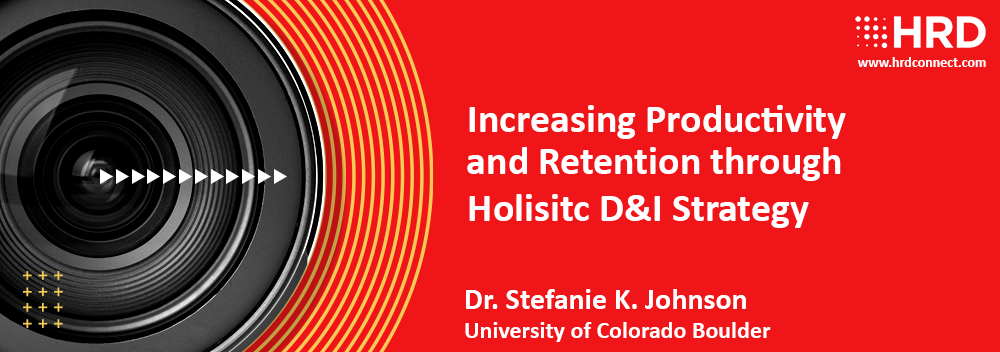Increasing productivity and retention through holistic D&I strategy
- 1 Min Read
Inclusion and diversity play a crucial role in fostering a sense of belonging in any company – which in turn builds up productivity and increases retention tendencies by a great margin. Join Dr Stefanie K. Johnson as she addresses the strategies of being inclusive and empathetic in the workplace to improve the predispositions among workers to work better and to bring about a sense of belonging.
- Author: Neville Chesan
- Date published: Jul 25, 2022
- Categories

Fifty-seven percent of employees desire a workplace with more inclusivity. It has been proven that more diverse companies outperform less diverse companies by at least 35%. D&I has become a significant factor to attract more and more employees to the workplace – conversely, employees will feel more unwelcome at a company that is not diverse.
Decision-making outcomes are heavily affected and impacted by the D&I strategies that a company adopts. Whether teams depend on a top-down decision or a more unilateral one, diverse viewpoints can result in an enhanced feeling of loneliness. Companies have a fine line to tow in that regard.
Dr Stefanie K. Johnson is an associate professor of Organizational Leadership and Information Analytics. She holds the Andrea and Michael Leeds Research Fellowship, is the Director of the Daniels Fund Ethics Initiative, and is a 2020 RIO Fellow. She has presented her work at over 170 meetings around the world including at the White House for a 2016 summit on diversity in corporate America.
Key Time Stamps:
0:16 – Employee pulse on D&I
0:57 – How does better diversity affect the company?
1:46 – How to adopt a better D&I strategy for recruitment?
3:41 – Diverse talent pool versus inclusion









